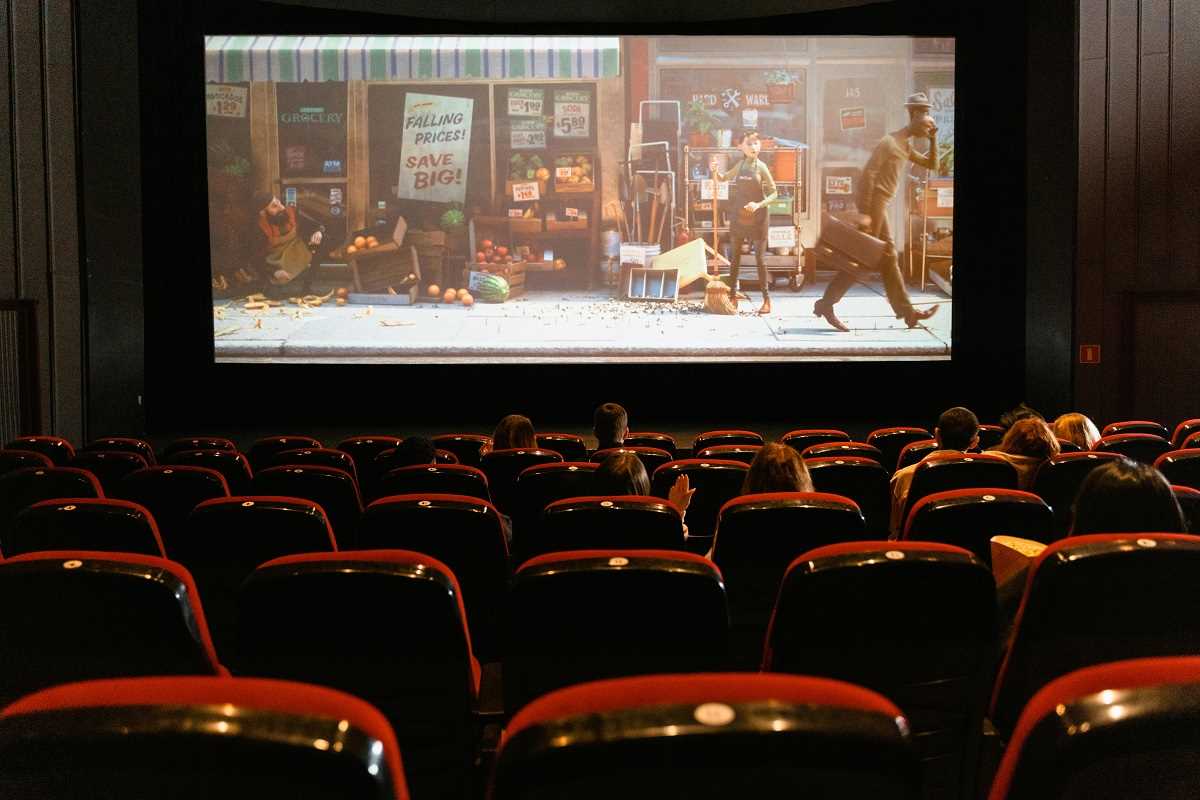Interactive films and series are changing the way we watch and experience entertainment. Unlike traditional movies and shows where the story unfolds without our input, these interactive experiences allow the audience to make decisions that shape the plot. Ever dreamed of directing your favorite character’s actions or deciding how a story ends? Now, you can do just that from your living room.
This trend is becoming more popular every year, with platforms like Netflix experimenting with groundbreaking titles like Black Mirror: Bandersnatch. But what’s behind this growing fascination with interactive storytelling? Why is it appealing, and where is this trend headed?
What Are Interactive Films and Series?
Interactive films and series are a blend of traditional storytelling and video game elements. Audiences are presented with choices throughout the experience, and their decisions influence the direction of the plot. Think of it as a “choose your own adventure” book brought to life on screen.
For example, in Black Mirror: Bandersnatch, viewers take control of a young video game designer named Stefan and guide him through key life decisions. From small details, like what cereal he eats for breakfast, to major plot twists that influence the story’s outcome, every choice feels meaningful.
This format doesn’t just make people watch passively—it pulls them into the story, making them active participants.
How It’s Changing Audience Engagement
One of the biggest shifts brought about by interactive films and series is how we engage with content. Instead of simply sitting and watching, viewers now play a role in crafting the narrative. This makes the experience more personal and immersive.
Imagine watching a typical movie where the main character has to decide between two bad options. You probably debate in your head what they should do, but in an interactive film, you actually get to choose. This makes the stakes feel higher because you’re directly responsible for what happens next.
Viewers also enjoy the replayability of interactive experiences. Unlike traditional movies or shows, you can watch an interactive film multiple times and have a different experience each time by making new choices. This encourages audiences to revisit the content, making it more engaging overall.
Black Mirror: Bandersnatch
Released by Netflix in 2018, Black Mirror: Bandersnatch is probably the most well-known example of an interactive film. Set in the 1980s, it tells the story of Stefan, a programmer trying to develop a game based on a choose-your-own-adventure book. The movie cleverly mirrors its own concept, as viewers are presented with choices at key moments.
Should Stefan follow his boss’s advice or rebel? Should he take a risk or play it safe? Each decision branches the story in different directions, leading to multiple endings. The result is a complex and layered experience that gets more interesting with every playthrough.
Carmen Sandiego: To Steal or Not to Steal
Netflix took the interactivity trend further with kid-friendly shows like Carmen Sandiego. This animated adventure lets viewers guide the famous thief-turned-hero as she pulls off heists and outwits her enemies. The show lets kids feel like detectives as they piece together clues and make critical choices to help Carmen succeed.
Unbreakable Kimmy Schmidt: Kimmy vs. the Reverend
The sitcom Unbreakable Kimmy Schmidt joined the interactive space with its 2020 spinoff Kimmy vs. the Reverend. The episode allows viewers to decide Kimmy’s future, including how she prepares for her wedding and whether or not she confronts her past. With its clever humor and silly options (like turning a mundane task into an epic dance battle), it offers plenty of laughs while staying true to the show’s quirky vibe.
Other Interactive Experiments
While Netflix has been leading the charge, other platforms and creators are joining the trend. Video games like Detroit: Become Human and Until Dawn blur the lines between gaming and filmmaking, giving players cinematic experiences filled with tough choices and branching paths. Even experimental theater productions are starting to explore ways to make audiences part of the show.
The Technology Behind It
Building an interactive film or series requires innovative technology. Creators have to design stories with multiple paths, plan out countless branches, and film scenes with different outcomes. Think of how much more work that is compared to making a single-version movie!
Netflix uses a technology they call “Branch Manager” to make interactive content possible. It allows a seamless transition between different scenes based on the viewer’s choices, without interrupting the experience. Behind the scenes, the content creators carefully map out “choice points” in the story where viewers make decisions. After each choice, the story shifts to the relevant path without any skipping or lagging, creating a smooth viewing experience.
Filmmakers also have to create specialized scripts that account for every possible outcome. This requires incredible attention to detail because each decision could lead to wildly different endings.
Why Are Interactive Films and Series Popular?
There are several reasons why people are drawn to this form of entertainment.
- Control Over the Story: Interactive content gives viewers what they’ve always wanted—control. Instead of passively watching a character make decisions you may not agree with, you get a say in what happens. It’s thrilling to influence the story and see how your choices play out on screen.
- Replayability: The ability to rewatch and experiment with different outcomes makes interactive films and series more entertaining over time. Unlike traditional movies and shows, which usually don’t change no matter how many times you see them, these experiences encourage viewers to explore alternative paths and discover hidden surprises.
- Personalized Experiences; People love entertainment that feels tailored to them. Interactive films and shows allow viewers to choose their path, creating a unique story that feels personal. This added layer of engagement strengthens the connection between the audience and the characters.
- Blending of Mediums: Interactive films borrow elements from both video games and traditional cinema, creating something entirely new. This hybrid appeals to fans of both mediums, offering the storytelling of movies with the interactivity of games.
The Future of Interactive Storytelling
The trend of interactive entertainment is still in its early stages, but it’s growing fast. Future developments could make these experiences even more immersive. For example, virtual reality (VR) could take interactivity to the next level by placing viewers directly inside the story. Imagine walking through Bandersnatch as Stefan or solving mysteries alongside Carmen Sandiego in a fully 3D environment.
Artificial intelligence (AI) may also play a role in interactive storytelling. Instead of following predetermined paths, AI-powered characters could respond dynamically to your decisions, creating a story that feels even more unique and unpredictable.
Creators might also expand interactivity to other genres, like horror or romance, catering to a wider range of audience interests. Whether it’s guiding characters through haunted houses or deciding the fate of an epic love story, the possibilities are endless.
Final Thoughts
Interactive films and series are rewriting the rules of storytelling, offering audiences a chance to shape the plots they love. With cutting-edge technology, creative storytelling, and strong audience appeal, this format is here to stay.
Whether you’re helping Stefan in Bandersnatch or laughing through Kimmy’s wacky adventures, these experiences show that entertainment can be more than just watching—it can be something you actively participate in. Who knows? The next big blockbuster might not just be something you watch—it could be something you decide.
 (Image via
(Image via





